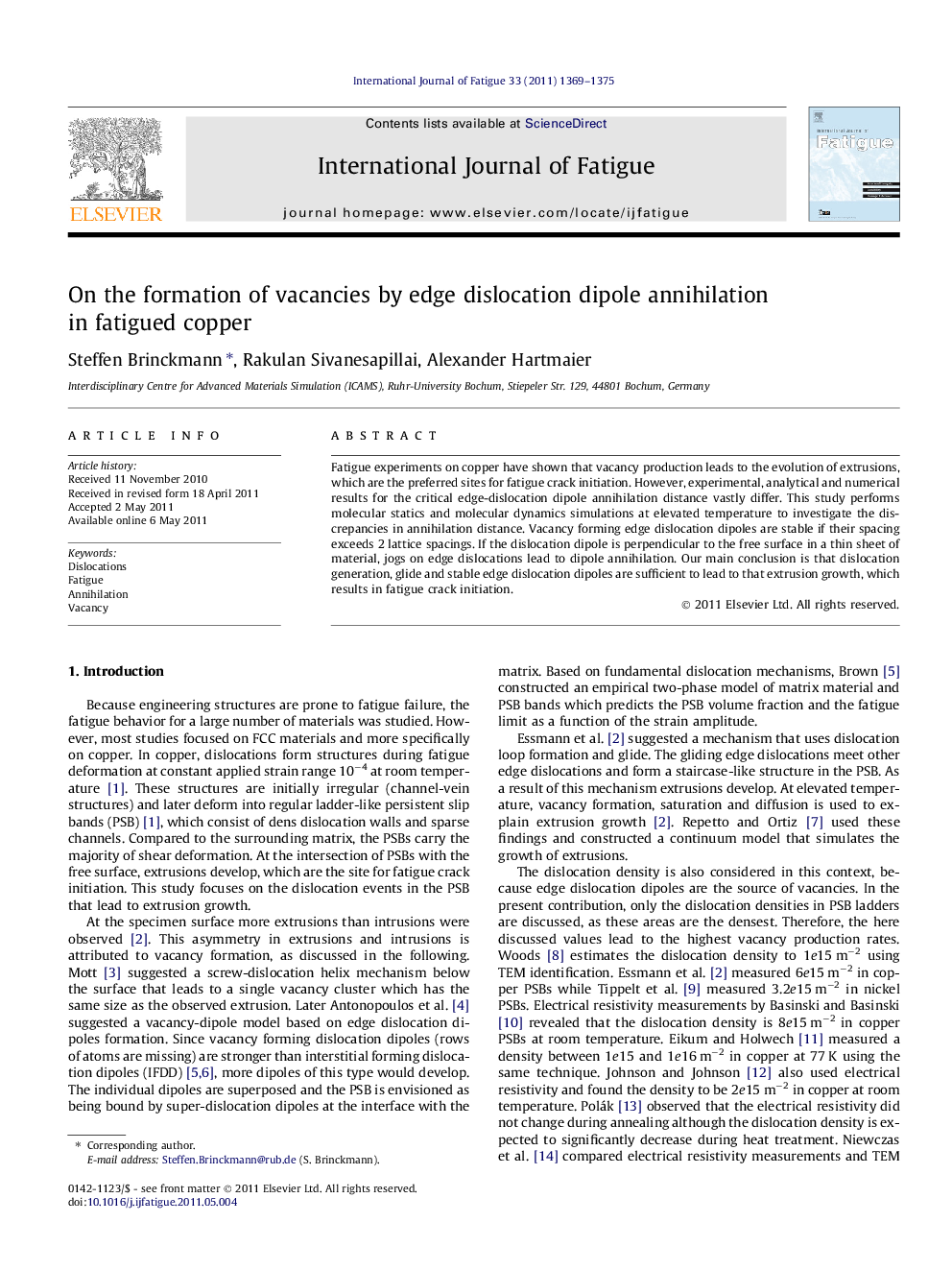| Article ID | Journal | Published Year | Pages | File Type |
|---|---|---|---|---|
| 778428 | International Journal of Fatigue | 2011 | 7 Pages |
Fatigue experiments on copper have shown that vacancy production leads to the evolution of extrusions, which are the preferred sites for fatigue crack initiation. However, experimental, analytical and numerical results for the critical edge-dislocation dipole annihilation distance vastly differ. This study performs molecular statics and molecular dynamics simulations at elevated temperature to investigate the discrepancies in annihilation distance. Vacancy forming edge dislocation dipoles are stable if their spacing exceeds 2 lattice spacings. If the dislocation dipole is perpendicular to the free surface in a thin sheet of material, jogs on edge dislocations lead to dipole annihilation. Our main conclusion is that dislocation generation, glide and stable edge dislocation dipoles are sufficient to lead to that extrusion growth, which results in fatigue crack initiation.
► Edge dislocation dipoles are central in the understanding of fatigue crack initiation. ► Vacancy forming edge dislocation dipoles are stable if their spacing exceeds two lattice spacings. ► If the dislocation dipole is perpendicular to the free surface in a thin sheet of material, jogs on edge dislocations lead to dipole annihilation. ► Dislocation generation, glide and stable edge dislocation dipoles are sufficient to lead to extrusion growth.
